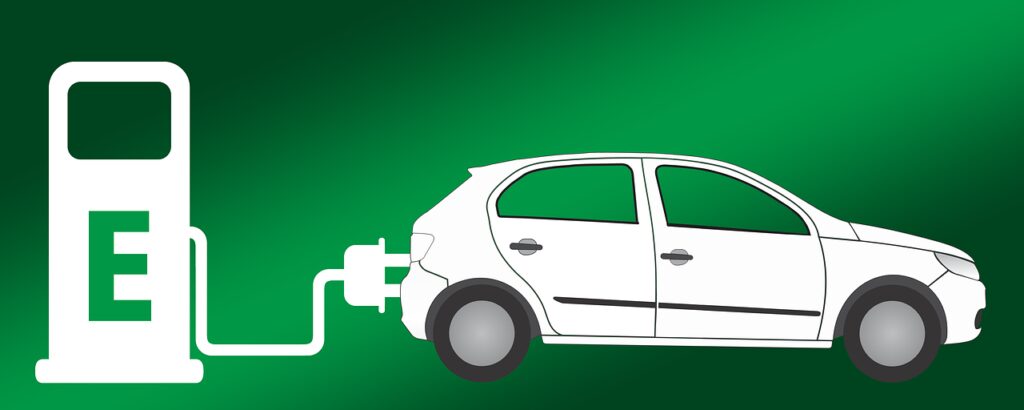
By - King Stubb & Kasiva on October 25, 2022
Technological advancements have been reshaping the automotive manufacturing industry in India. Indian automotive industry is now one of the fastest growing markets in the world and accounts for a large share of the Indian economy, a broad range of stakeholders and a multifaceted reach. India’s potential to create an electric mobility paradigm could have a significant impact domestically and globally. Electric Vehicle companies have realised this potential and have started adopting advanced manufacturing techniques to promote e-mobility. It could very well be predicted that in future the electric vehicle industry will significantly evolve, probably better than the current automobile to combat environmental issues.
The Indian electric vehicle market was estimated to be worth USD 7,025.56 million in 2021, and is anticipated to have grown to be worth USD 30,414.83 million by 2027, registering a CAGR of 28.93% in terms of revenue (2022-2027) . Due to the rapidly rising mild-hybrid electric vehicle adoption rate year over year, favourable electric vehicle legislation, and enhanced government activities across India, the market for electric vehicles is experiencing significant growth.
In the midst of its electrification missions, the Indian government has made conscious efforts to support the growth of electric vehicle companies in India through various policies and initiatives. In this article, we will discuss the key policies adopted by the government in order to support the electric vehicle industry in India and the incentives available for EVs manufacturing companies in India.
The Indian government has always been at the forefront of developing national EVs adoption strategies. The following list of government initiatives to promote EVs adoption includes:
The Production Linked Incentive (PLI) programme is primarily focused on electric vehicles (EVs) and hydrogen fuel cell cars, as well as their parts. Champion OEM Incentive Scheme and Champion Component Incentive Scheme are two distinct schemes within it.
A programme with a sales value link, the Champion OEM Incentive is available for all battery electric vehicle (BEV) and hydrogen fuel cell vehicle sectors. This component offers a financial incentive that ranges from 13 to 18%. Any other innovative automotive technology vehicle listed by the Ministry of Heavy Industries is also covered.
The following are some of the government's several initiatives to encourage electric vehicle use in India and to assist electric vehicle companies in India:
One of the essential needs for boosting the adoption of electric vehicles in India is the availability of efficient charging infrastructure. In order to hasten the development of public EVs charging infrastructure across the nation, the Ministry of Power has released "Charging Infrastructure for Electric Vehicles - Guidelines and Standards ," which details the duties and responsibilities of key stakeholders at the Central & State level.
The energy and demand charges for EVs charging, being the two components of the tariff, have been observed to vary among states. Each state is tasked with determining tariffs for various customer groups. Reviewing the state-wise tariffs reveal that most states have EV tariffs that range from INR4 to INR6/kWh.
Electric Vehicle Industry in India is growing to a marked extent. The regulations and incentives introduced by the central and state governments, clearly establish India’s intention to promote EVs and develop India into a manufacturing hub for EVs. Even public, these days is looking for alternativesources to save on their travelexpenses, and the Indian EVs industry, gradually gaining momentum comes to their rescue amidst rise in crude oil costs.
However, a widespread switch from internal combustion engine (ICE) vehicles to electric vehicles (EVs) necessitates the expansion of infrastructure facilities, such as charging stations, and automobiles that have a greater range (KM range with a single charge). Overall, a balance would need to be struck, which would not only catalyse a homegrown EVs ecosystem but also lead the way towards sustainable growth and development.
EV conversion is legal in India. ARAI has set out clear technical requirements for the approval of EV Retrofitting Kits. In accordance with Rule 126 of the Central Motor Vehicle Rules of 1989, the Government of India has notified ARAI as a leading Testing and Certification Agency. The government has sought help from ARAI in developing automobile standards and laws.
The PLI Scheme for the EV sector aims to remove the cost barriers that the industry faces when manufacturing product incorporating Advanced Automotive Technology in India. The incentive system will encourage business to make new investments in the domestic global supply chain for utilising Advanced Automotive Technology products.
The scheme outlined the requirements for an electric two-wheeler to be eligible for this subsidy that required minimum range of 80 km and a minimum top speed of 40 kmph. The subsidy amount for battery-powered two-wheelers has been increased under the recently modified policy.
The Ministry of Heavy Industries, Government of India, has partnered with the Automotive Research Association of India (ARAI), an independent organisation, to provide reliable, safe, and environmentally friendly automobiles.
To support India's electric vehicle ecosystem, they are creating locally produced electric vehicle chargers. Infrastructure for charging electric vehicles is crucial for their promotion.
Also read our Article on Electricity Rules 2021: Safeguarding Clean Energy